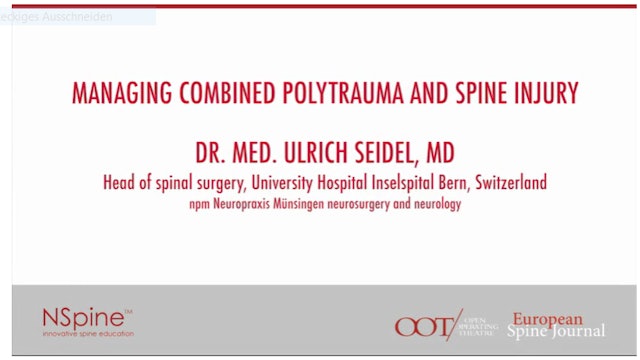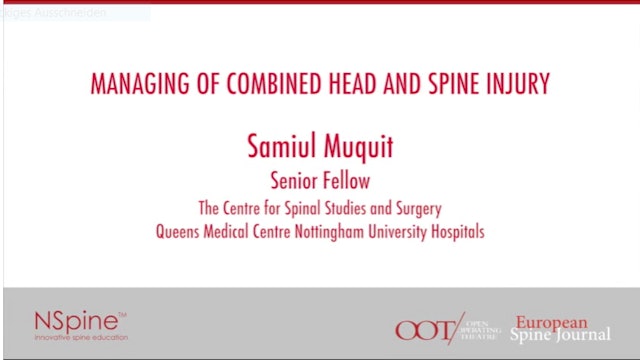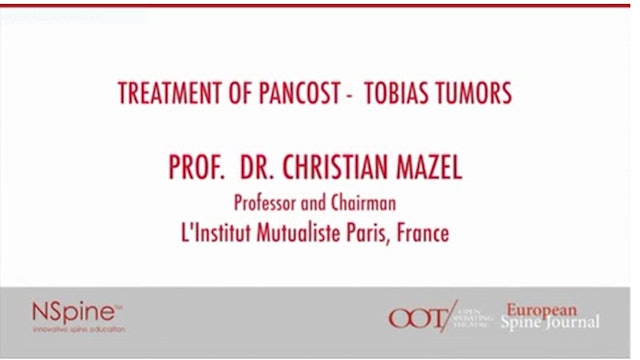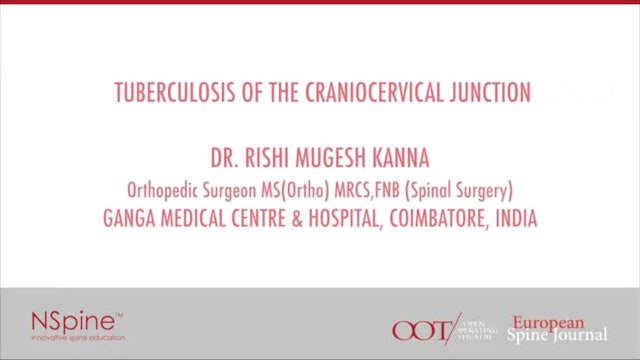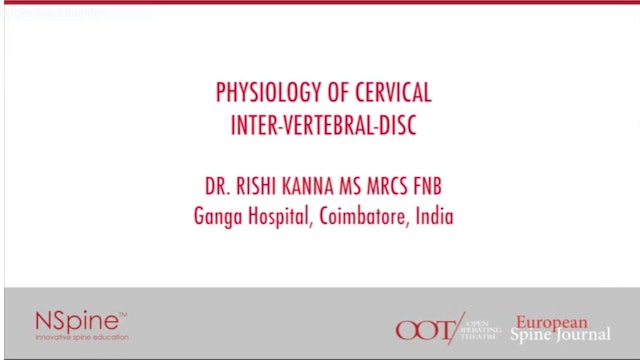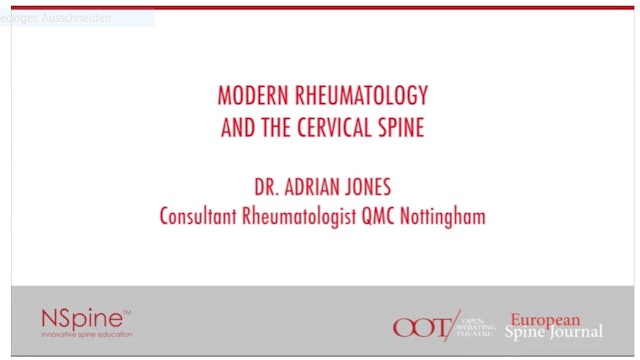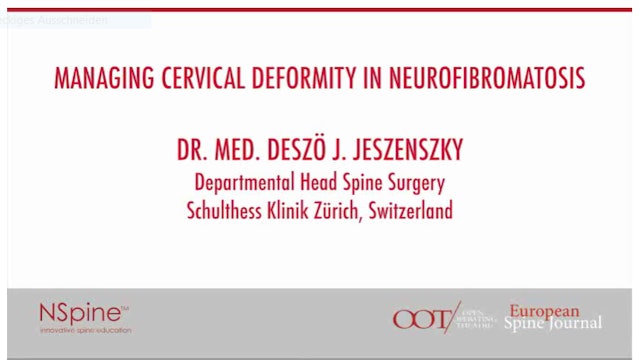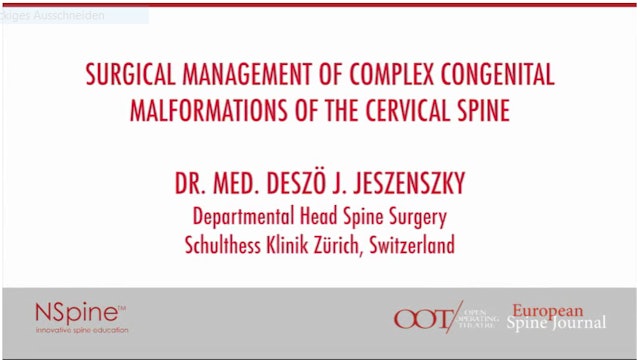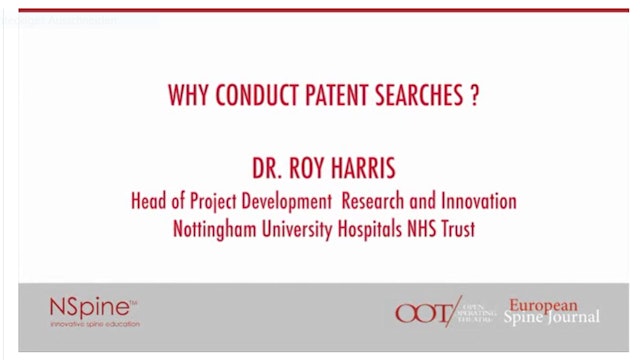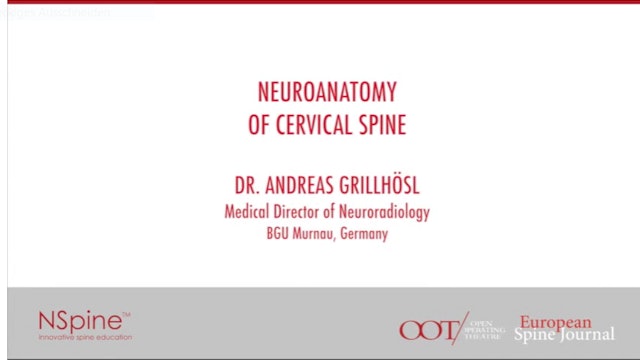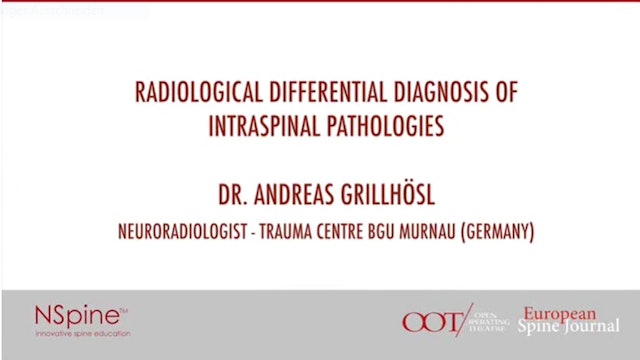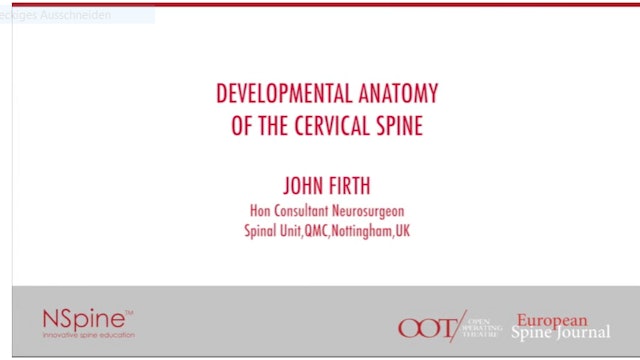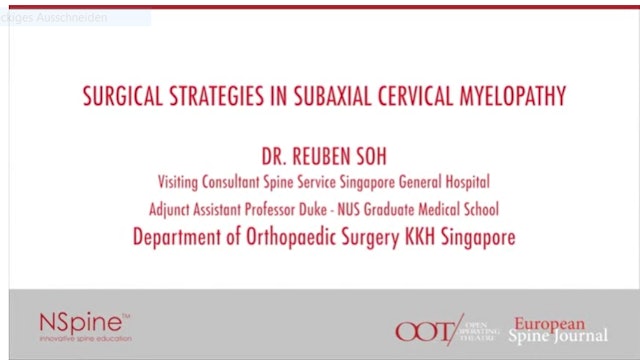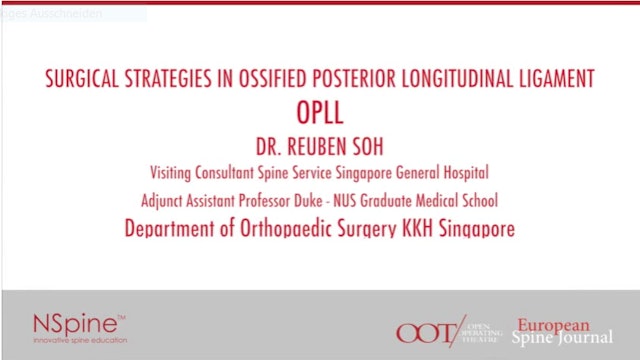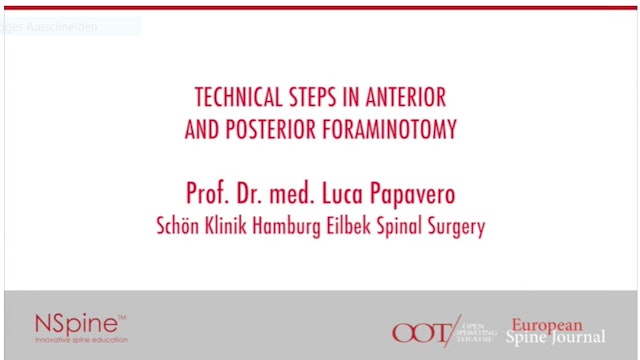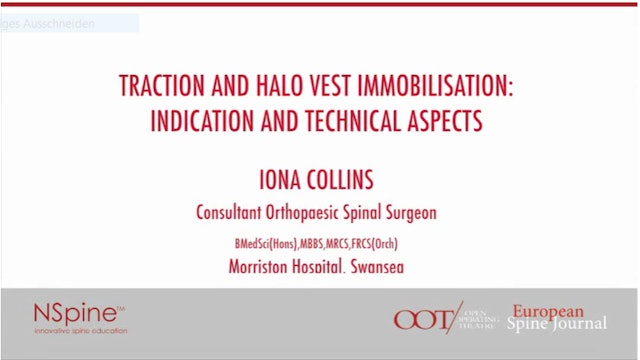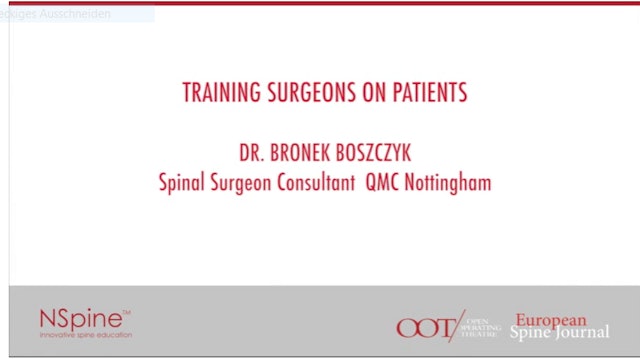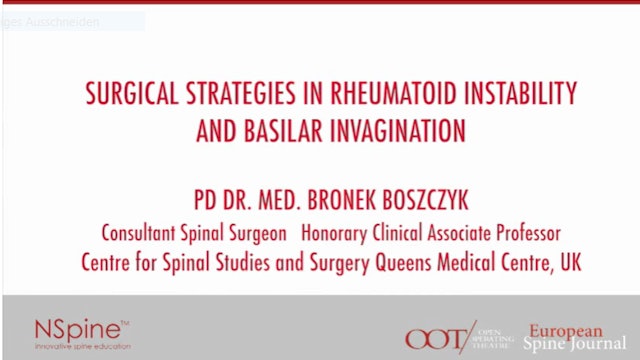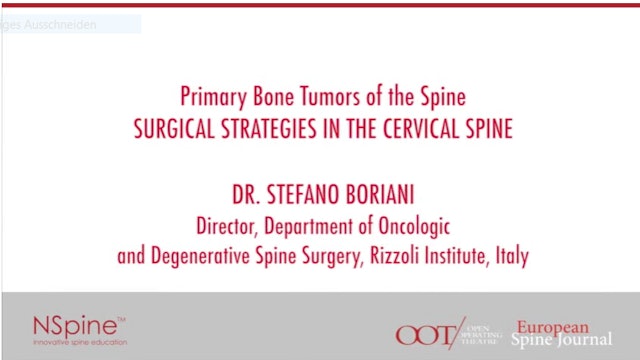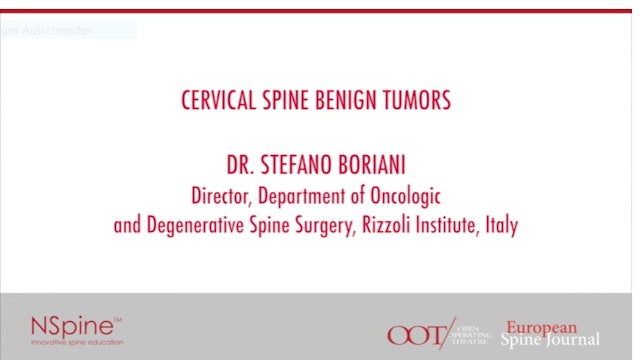-
Penetrating spine injuries
Penetrating spine injuries
17-066/23
-
Traumatic dural disruption and cord tissue prolapse
Traumatic dural disruption and cord tissue prolapse
17-067/24
-
Managing combined polytrauma and spine injury
Managing combined polytrauma and spine injury
17-044/22
-
Managing of combined head and spine injury
Managing of combined head and spine injury
17-043/21
-
Treatment of pancost - tobias tumors
Treatment of pancost - tobias tumors
17-042/20
-
Tuberculosis of the craniocervical junction
Tuberculosis of the craniocervical junction
17-041/19
-
Physiology of cervical inter-vertebral-disc
Physiology of cervical inter-vertebral-disc
17-040/18
-
Modern rheumatology and the cervical spine
Modern rheumatology and the cervical spine
17-039/17
-
Managing cervical deformity in neurofibromatosis
Managing cervical deformity in neurofibromatosis
17-038/16
-
Surgical management of complex congenital malformations of the cervical spine
Surgical management of complex congenital malformations of the cervical spine
17-037/15
-
Objective ethics & medical decision making
Objective ethics & medical decision making
17-035/14
-
Why conduct patient searches?
Why conduct patient searches?
17-034/13
-
Neuroanatomy of cervical spine
Neuroanatomy of cervical spine
17-033/12
-
Radiological differential diagnosis of intraspinal pathologies
Radiological differential diagnosis of intraspinal pathologies
17-032/11
-
Developmental anatomy of the cervical spine
Developmental anatomy of the cervical spine
17-031/10
-
Surgical strategies in subaxial cervical myelopathy
Surgical strategies in subaxial cervical myelopathy
17-030/09
-
Surgical strategies in ossified posterior longitudinal ligament
Surgical strategies in ossified posterior longitudinal ligament
17-029/08
-
Technical steps in anterior and posterior foraminotomy
Technical steps in anterior and posterior foraminotomy
17-028/07
-
Traction and halo vest immobilisation: Indication and technical aspects
Traction and halo vest immobilisation: Indication and technical aspects
17-027/06
-
Advanced techniques for atlantoaxial tumors
Advanced techniques for atlantoaxial tumors
17-026/05
-
Training surgeons on patients
Training surgeons on patients
17-025/04
-
Surgical strategies in rheumatoid instability and basilar invagination
Surgical strategies in rheumatoid instability and basilar invagination
17-024/03
-
Primary bone tumors of the spine, surgical strategies in the cervical spine
Primary bone tumors of the spine, surgical strategies in the cervical spine
17-023/02
-
Cervical spine benign tumors
Cervical spine benign tumors
17-022/02





